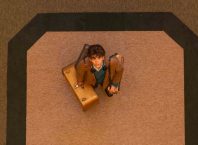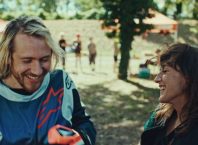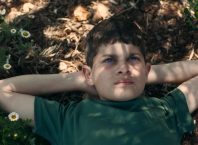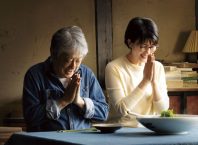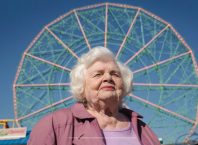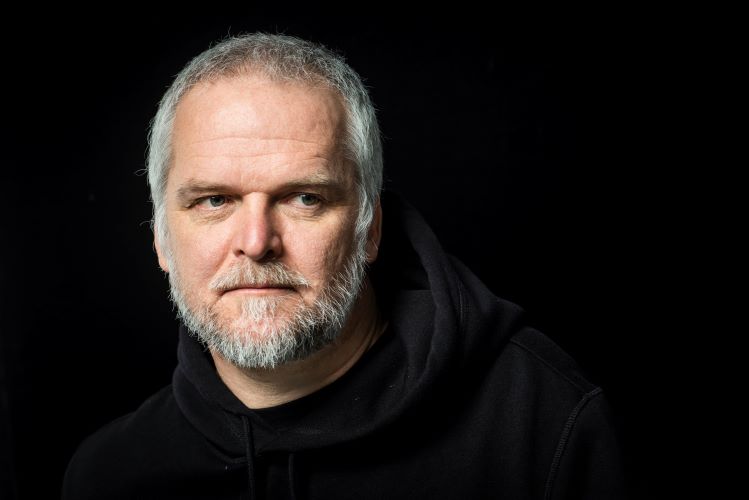
The 26th edition of Docaviv – the Tel Aviv international documentary film festival, will take place from May 23 – June 1, 2024. One of the highlights of this year’s festival will be a tribute to esteemed Lithuanian documentary film director, producer, and educator, Audrius Stonys. His films have garnered many awards, including the European Film Award for Earth of the Blind, the Lithuanian National Prize in 2002, and his film Ramin was selected to represent Lithuania in the Best Foreign Language competition at the 85th Academy Awards. The features and short films to be screened at the festival include: Earth of the Blind (1992), Harbor (1998), Alone (2001), UKU UKAI (2006), Ramin (2011), Woman and the Glacier (2016), and Bridges of Time (2018). Audrius Stonys will conduct a masterclass at Docaviv, with screenings of his short films. The festival provides a wonderful opportunity to immerse in the filmmaker’s intensely moving body of work, and experience the beauty of his distinctive vision.
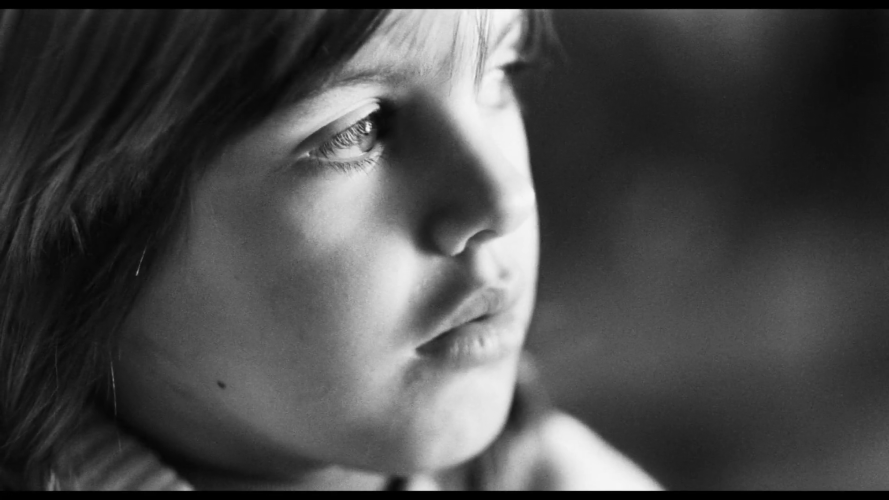
Instead of following a traditional narrative structure, Earth of the Blind (1992) juxtaposes three different sets of images, evoking associations, thoughts, and feelings. Over the space of 25 minutes, the camera follows a herd of cows, a man in a wheelchair making his effort-full way along a dusty road, and an old, blind woman going about her day. A placid cow is seen resting on the grass, a few moments later, a slaughterhouse fills the screen, and one knows what the cow has yet to learn. The old woman gently retrieves an egg from the hens, and holds a bouquet of hay in her hands for the goats. The goats gleam white in the dark barn. And the man keeps pumping the hand levers of his wheelchair, moving forward. Without words of explanation or interpretation, or any words at all, the film invites the viewer to enter the worlds of these beings, human and animal, worlds replete with detail, full of wonder.
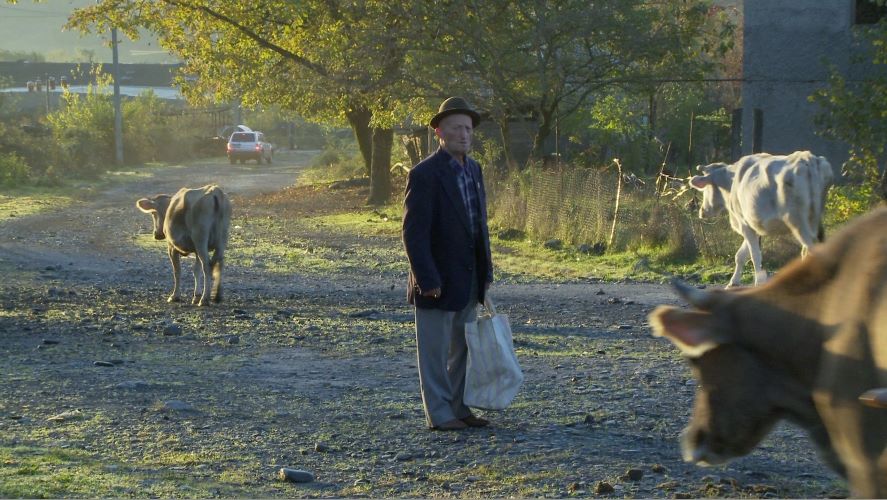
Created with a similar sensibility, emphasizing observation over verbal storytelling, Ramin (2011) takes the viewer on a journey, a journey of the heart. Layers of images accumulate to create understanding, as one becomes acquainted with Ramin Lomsadze through his daily life and his surroundings. A black and white photograph of a young woman, the ceramic bowl of water for his morning ablutions, a small, peach-colored kitten. As is Stonys’ way, there are no explanations, and the viewer becomes part of the story, as we fill in the lacunae with our own imagination and interpretations. Now in his 70s, Ramin lives alone in a village in Georgia, where, as he is greeted in the marketplace, it seems he has lived his entire life. A random scene of boys wrestling acquires meaning, as one learns of Ramin’s former fame, having won seven matches in 55 seconds. Yet as he sets the table for his 75th birthday, one cannot but wonder whether the memory of past glory is enough to sustain him through his solitary existence. The agility of an athlete remains as he tosses a glass in the air and kicks up his heels to dance. Ramin is a man full of wry humor, vitality, and desire. He knows what love is and continues to seek it.
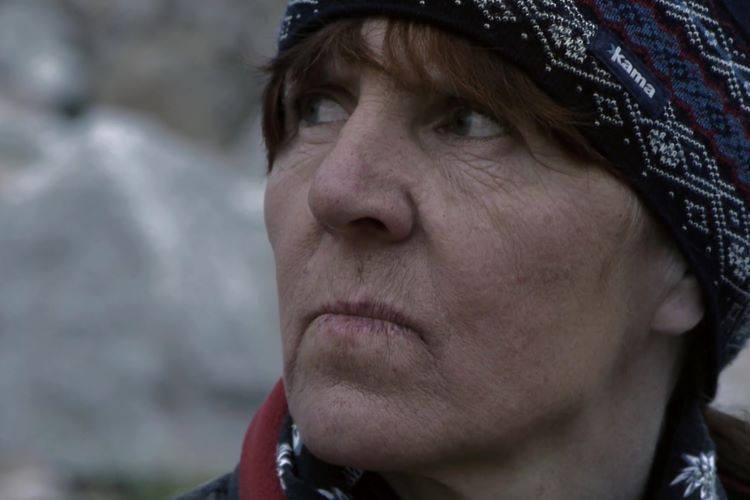
Woman and the Glacier (2016) takes the viewer 3500 meters up to the Tuyuk-Su Glacier in the Tien-Shan mountains of Kazakhstan. In this remote location, glaciologist Ausrele Revutaite has made observing the glacier her life’s work, living there for over 30 years. The measurement station was established in 1957 as part of the World Glacier Monitoring Service Network, and Revutaite came to live and work there in 1982. In his film, Stonys offers access to the beauty and solitude of her world. There is never a feeling of intrusion as the camera silently observes Revutaite writing at her desk, outdoors taking measurements, or walking through the endless white snow, a small, dark, spec that disappears. Even when the focus is close, Revutaite’s gaze is direct and full of strength, as she and the camera acknowledge one another’s presence in the landscape. A dog and cat are part of this community, and the two can be seen vigorously wrestling, tumbling, and biting one another with no mercy, or affectionately cuddling, almost like siblings. The glacier is a dominant character in the film, words are unnecessary as the camera explores the configurations of ice and rock. One of the striking aspects of Stonys’ films is the way they convey a sense of time, and the awareness of the minute as well as the monumental, the eternal and the ephemeral. Our human time seems so brief and fragile against the backdrop of the glacier, yet as one watches the melting ice cascade down the mountain, it is a reminder of the evanescence of all things. Yet another perspective on time is experienced in the vibrant musical interludes of the dambra player, Bilal Iskakov, that connect the film to the Kazakh cultural tradition.
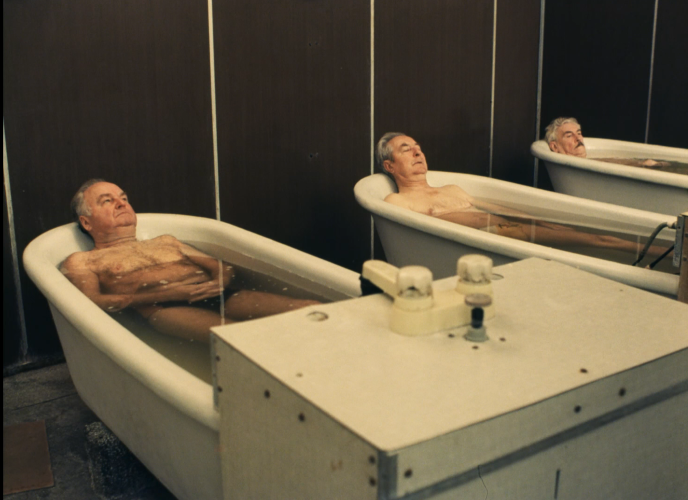
Yet there is also a wry sense of humor in all of Stonys’ films, understated, yet always present. These moments often appear as a small surprise in the midst of a film that is otherwise contemplative, such as Woman and the Glacier. The films evoke an appreciation of the wonders of life, and the quirks of being human. Harbor (1998) is a ten-minute film that observes the clients of a hotel spa, as they care for their bodies, and perhaps their souls. A reed-thin older man sits on an orange bench, naked, waiting, vulnerable. Other men lie somberly in tubs of water and as women wrapped in white sheets circle around a contraption that emits steam, the feeling is ritualistic, ceremonial.
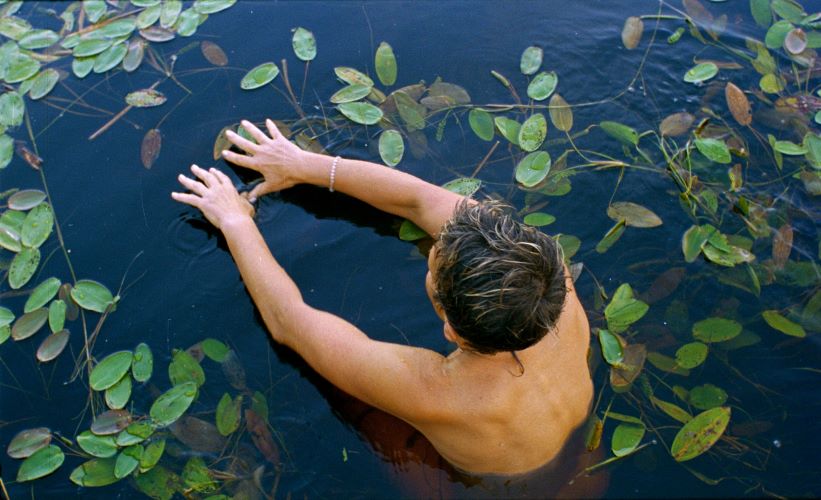
UKU UKAI (2006) explores the human landscape of well-being from different perspectives. The film opens as a beautiful young woman attends to the face and hair of an older, wrinkled, woman, with a serious intensity that feels almost ludicrous, yet also evokes a sense of caring. Images of people exercising or participating in various wellness activities are interspersed with those of two recurring characters. One is running man, whose running is accompanied by a soundtrack of guided relaxation. The other, is an older woman, who appears to live alone, and the camera follows her as she sleeps and wakes, washes her face, and walks laps around her modest living room. As in all of Stonys’ films there is a sense of meticulous composition, with precise transitions, evocative soundtracks, and images of astonishing beauty.
Bridges of Time (2018) by Stonys and Latvian filmmaker Kristine Briede is an homage to the documentary filmmakers of the Baltic New Wave of the 1960s, whose poetic documentaries made during the Soviet era expressed alternative perspectives. It is a mesmerizing film, that follows its own path, speaking through images from the past and present, encountering these filmmakers through their words, their works, and their surroundings. The filmmakers featured include: Herz Frank, Uldis Brauns, Ivars Seleckis, Mark Soosaar, Andres Sööt, Robertas Verba, Henrikas Šablevičius, and Aivars Freimanis.
Celebrating the work of Audrius Stonys – the full program of films and screening dates may be found on this link: https://www.docaviv.co.il/2024-en/films-category/celebrating-the-work-of-audrius-stonys/

